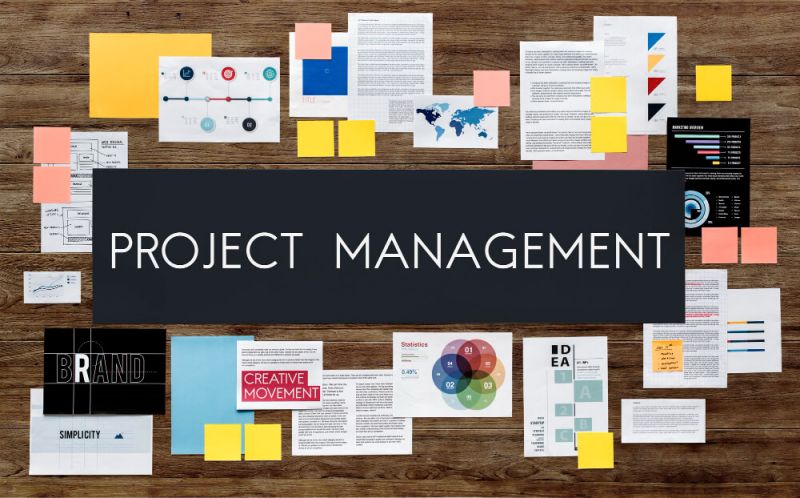Track Resource Availability In Project Management
Back to Article List
Share this Page?

By Multinet Group: Recently
Projects are planned and scheduled, but that's just the preamble to the real work. Executing projects to meet deadlines without overspending the budget requires a project manager to understand resource availability. It's part of the larger process of resource management.
Resources are anything used to deliver project tasks including materials, equipment, labor and more. We'll talk about the different types of project resources, why they're so important to project management and how resource management software helps you manage resource availability.
What Is Resource Availability?
Resource availability is understanding what you need to execute a project, when you need it and under what circumstances. Being able to coordinate the resources you need to deliver your project is key to a successful project that meets its deadline and keeps to its budget.
Figuring out how to distribute and allocate resources is part of any effective resource management plan. First, a project manager needs to know what resources are needed for the project. This is easier said than done.
Then, you have to know all the resources, from the tools your team will use to the team you'll assemble. Once you have a thorough list of resources, you have to assemble them like puzzle pieces to fit into your schedule so they're delivered when you need them. Otherwise, there will be costly delays.
Types of Project Resources
The list of project resources is almost endless, but they can be divided into two categories, tangible and intangible. Tangible resources are material meaning, people, places and things. Intangible resources aren't material, such as energy, morale, time, information, etc.
That doesn't mean this dichotomy defines all project resources. There are some that are harder to classify, for example, money. It's tangible in that you can hold it in your hand and count it. But it's also intangible in that its value depends on the state that issued it.
Therefore, project resources require a bit more detail to adequately define. When managing a project, it helps to look at resources divided into these seven categories: people, information, materials, tools, energy, capital and time. Let's define each of these terms and provide an example to illustrate it for better understanding.
People
These are your human resources, such as the teams you assemble to execute the project. People, it's been said, are your most valuable resource. There's a reason for this. Without your team, the other six categories of resources are inert. You can have all the money in the world and a great set of tools, but without a crew, all you have is a barren job site. Take the time to assemble a team with the skills and experience you need to accomplish your objectives.
Information
The knowledge that you and your team have to complete the project is also a resource. Whether you have to train them or they come to the project with those skill sets already learned, that information is invaluable to the success of the project. Information can be everything from knowing how to use the tools required to execute the tasks to understanding the processes and methodologies of the project. Information is flexible and teams must be, too. As things change, everyone must adapt quickly.
Materials
Materials are easy to understand as they're tangible. These objects are used in the execution of the project and can be anything from bricks and mortar if you're in construction to paper and pencils if you're working in a more abstract environment. But generally, materials are related to more concrete projects, such as construction or manufacturing. These industries have to deal with supply chain management and the sourcing of materials, which adds another layer to resource availability.
Tools
Tools are another tangible resource. They're used throughout the life cycle of a project, though, and not strictly during the execution phase. Tools run the gamut from construction and manufacturing tools, such as hammers and heavy machinery, to hardware and software. Computers are used for nearly any project, while the software employed is more tailored to the type of project it is. Whichever is the case, tools are necessary resources for any project and their availability is key to delivering project success.
Energy
Many might not include energy in a list of required resources but it's essential. Energy could mean the energy that runs the tools and machinery used in the project to a tool or software that makes your team productive. For most projects, energy is electricity. It runs your computer, which is the work site for software development and more. But construction and even some manufacturing projects require other types of energy, be it gasoline or diesel. Making sure you have an uninterrupted source of energy is critical and should be part of any resource availability planning.
Money
Everyone knows that projects are dead in the water if they're not funded and yet so often money isn't included in resource availability plans. But, of course, before a project can move forward, you need financial support from stakeholders. If you're not properly funded or mismanage your budget, the project won't continue. With money, you can get more of almost any resource, but without money, you're stuck.
Time
Time is a resource that you can manage, but never control. There are no time-outs in project management, so accurately scheduling your resources to be there when you need them is another critical aspect of resource management. Having your project on a timeline is a great way to view the whole project from start to finish and work backward from your deadline to ensure you can get everything done in the allotted time. Time is universal and it impacts every project, but it's one of the more elusive resources on this list.
Multinet group via her subsidiaries specializes in project management, technology consultancy and procurement. Contact us today.